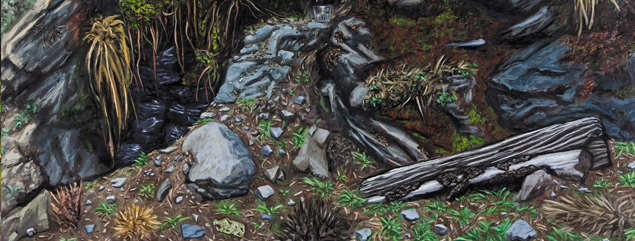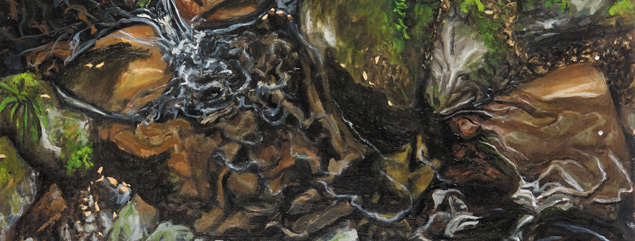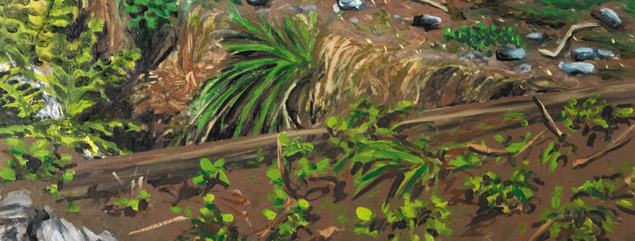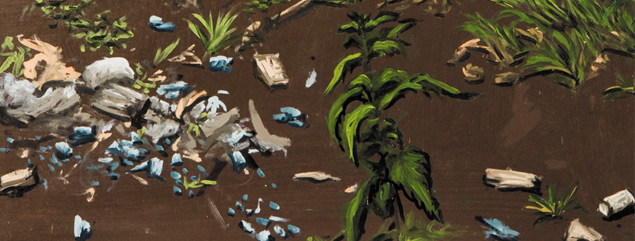Text by Rosa Queralt
In search of isolation she settles down in nature
in a squat in Minas de Arditurri, Oiartzun, beside “el paraíso”. Around her are the traces and vestiges of a former mine exploited since Roman times and abandoned when mining stopped in 1984. It’s a special place, full of cavities and craters, rocks and stones which were left there and which the forest and the vegetation now take on trying to cover and erase them, imposing themselves on the sensation of rubble and demolition with all their strength.
Because the mind, emotions and senses are awakened as much by their surroundings as by their mood, Idoia Montón sees the impossibility of escaping the patterns and labyrinths of this place and returns to the subject of the natural environment. Though the change of direction is radical with respect to the joyful versions of the previous decade, she is now facing a world very far removed from that side of nature. It’s another reality, which at times she perceives as almost irrational, the channel for a relationship with mystery. The forms are ephemeral, like shadows, which on taking the light are transformed only to disappear later. It is not now a question of landscape as a genre but as a specific place inhabited by its own contrasts; presence and emptiness, beauty and anguish, life and chaos, and in spite of that -magic.
Her paintings in Arditurri reflect the persecution of the support of these and other antinomies, through continuing to exalt the tragic and extraordinary condition of the world and its images.



